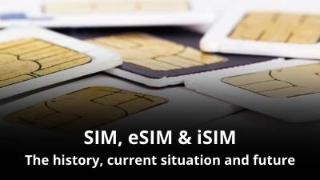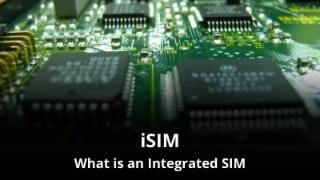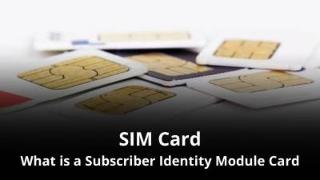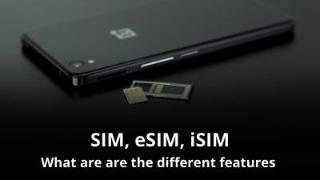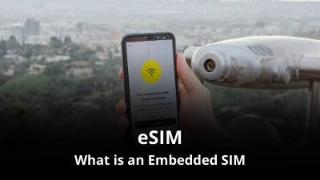Introduction What is an Embedded SIM (eSIM)?
An embedded SIM (eSIM) is a digital SIM card embedded directly into a device’s hardware, eliminating the need for a physical SIM card. However, it is still a separate processor within the phone. eSIMs are rewritable and can be provisioned remotely, allowing users to switch between different mobile carriers without changing the physical SIM card.
What do you need to know about an eSIM:
- Why is an Embedded SIM (eSIM) important for your Mobile brand?
- Streamlined Onboarding and Activation with eSIM
- Enhanced Flexibility and Convenience
- Global Roaming and International Expansion
- Cost Efficiency and Operational Benefits
- eSIM Support for IoT and M2M Devices
- Enhanced Security and Fraud Prevention
- Competitive Advantage and Innovation
- Enhanced User Engagement
- Data Monetization and Analytics
- Sustainable Practices
- Enhanced Partner Ecosystem
- Regulatory Compliance and Data Security
- Brand Differentiation and Customer Trust
- Agility in Market Response
- Summary of why an embedded SIM (eSIM) is important for your Mobile brand
Why is an Embedded SIM (eSIM) important for your Mobile brand?
Here’s why eSIM technology is important for your Mobile Virtual Network Operator (MVNO):
Streamlined Onboarding and Activation
Remote Provisioning: eSIMs can be provisioned remotely, enabling customers to activate their devices without the need for a physical SIM card. This simplifies the onboarding process, making it faster and more convenient for your customers.

Instant Connectivity: Users can connect to your MVNO network immediately after purchasing a compatible device, enhancing the user experience, and encouraging faster adoption of your services.
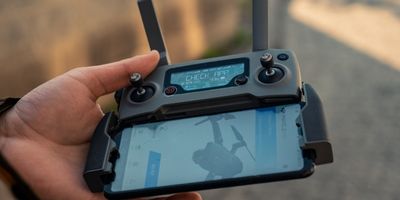
Enhanced Flexibility and Convenience
Carrier Switching: eSIM technology allows users to switch between different carriers and plans easily, directly from their devices’ settings. This flexibility empowers customers to choose the best network and plan for their needs without the hassle of changing physical SIM cards.
Multi-Device Usage: Customers can use multiple devices with the same phone number and plan, allowing for seamless transitions between devices like smartphones, tablets, smartwatches, and laptops.
Global Roaming and International Expansion
Effortless Roaming: eSIMs facilitate smooth international roaming. Travelers can connect to local networks abroad without swapping SIM cards, providing a seamless communication experience while traveling.
Market Expansion: For MVNOs looking to expand internationally, eSIM technology simplifies the process for customers to use your services in different countries, reducing entry barriers in new markets.
This can be useful for your Business Plan of course it is depending on our Business Model.

Cost Efficiency and Operational Benefits
Reduced SIM Card Costs: Eliminating physical SIM cards reduces production, distribution, and inventory costs, improving your MVNO’s cost efficiency.
Lower Support Costs: The self-service nature of eSIMs reduces the number of support requests related to SIM card issues, lowering customer support costs for your MVNO.
This can be useful information for your Financial Plan.
Support for IoT and M2M Devices
IoT Connectivity: eSIMs are ideal for IoT and machine-to-machine (M2M) devices. They enable efficient and secure connectivity for various IoT applications, fostering partnerships and revenue opportunities in the IoT sector.
Automated Device Activation: IoT devices equipped with eSIMs can be activated automatically during the manufacturing process, streamlining the deployment of IoT solutions for businesses and enterprises.
Enhanced Security and Fraud Prevention
Secure Authentication: eSIMs utilize robust encryption and authentication mechanisms, enhancing the security of user credentials and communications.
Fraud Prevention: The remote management capabilities of eSIMs allow for swift responses to potential fraud situations, enhancing your MVNO’s security measures and protecting both your business and your customers.
Competitive Advantage and Innovation
Differentiation: Offering eSIM-enabled services differentiates your MVNO in the market. It showcases your MVNO as innovative and customer-focused, attracting tech-savvy consumers looking for advanced, hassle-free solutions.
Partnership Opportunities: Collaborations with device manufacturers and other technology providers become more feasible, allowing your MVNO to explore unique partnerships and service offerings.
By embracing eSIM technology, your MVNO can offer a more convenient, flexible, and secure mobile experience to your customers. It not only simplifies your operations but also positions your MVNO as a forward-thinking and customer-centric service provider in the competitive telecommunications landscape.
Enhanced User Engagementof an Embedded SIM (eSIM)
Customized User Experience: eSIM technology allows for personalized onboarding experiences. MVNOs can offer tailored activation processes, welcome messages, and promotions directly to users’ devices, increasing user engagement and brand loyalty.

Interactive Services: With eSIM-enabled devices, MVNOs can provide interactive services such as in-app SIM activation and service management, enhancing user engagement and satisfaction.

Data Monetization and Analytics
Data Insights: eSIM technology enables MVNOs to gather valuable data on user behavior, network usage patterns, and geographic locations. Analyzing this data provides insights that can be leveraged for targeted marketing campaigns and service optimizations.
Monetization Opportunities: Aggregated and anonymized user data can be monetized through partnerships with third parties, creating additional revenue streams for your MVNO.
Sustainable Practices of an Embedded SIM (eSIM)
Reduced Environmental Impact: By eliminating physical SIM cards, eSIM technology contributes to environmental sustainability by reducing plastic waste and the carbon footprint associated with manufacturing, packaging, and transportation.
Green Credentials: Embracing eSIMs aligns your MVNO with eco-friendly practices, appealing to environmentally conscious consumers and partners.

Enhanced Partner Ecosystem
Collaboration Opportunities: eSIM technology opens doors to collaborations with device manufacturers, IoT solution providers, and app developers. These partnerships can lead to exclusive offers, bundled services, and innovative IoT solutions, expanding your MVNO’s service portfolio.
Agile Service Integration: Integration with various partners becomes more seamless, enabling your MVNO to quickly adopt new services, applications, and technologies that enhance the overall customer experience.
Regulatory Compliance and Data Security
Compliance Management: eSIMs offer robust security features, ensuring compliance with data protection regulations and safeguarding user privacy. This is particularly vital in regions with stringent data protection laws.
Enhanced Security Protocols: MVNOs can implement advanced security protocols such as Remote SIM Provisioning (RSP) to further enhance data protection, ensuring the integrity of customer information.
Brand Differentiation and Customer Trust

Premium Brand Image: Being at the forefront of technology by offering eSIM-enabled services enhances your MVNO’s brand image. It positions your MVNO as a premium service provider, attracting discerning customers. Eventually all MNOs, MVNOs will offer eSIM.
Customer Trust: The security and convenience provided by eSIMs increases trust among customers. When users trust the security of their mobile services, they are more likely to stay loyal to your MVNO.
Agility in Market Response
Rapid Service Deployment: eSIM technology enables your MVNO to quickly adapt to market demands. New services and plans can be deployed rapidly, allowing your MVNO to respond promptly to changing customer needs and market trends.
Competitive Edge: The ability to swiftly launch innovative services, customized plans, and promotional offers gives your MVNO a competitive edge in the dynamic and fast-paced telecommunications industry.
Summary of why an Embedded SIM (eSIM) is important for your Mobile brand
In summary, embracing eSIM technology is not just about operational efficiency; it’s about creating a holistic, customer-centric, and sustainable MVNO ecosystem. By offering a seamless, secure, and innovative mobile experience, your Mobile Brand can foster customer loyalty, drive revenue growth, and establish a strong market presence.
The eSIM positions your MVNO as a technologically advanced and customer-focused service provider, setting the stage for long-term success. Nowadays it is all most a must to offer eSIM.

